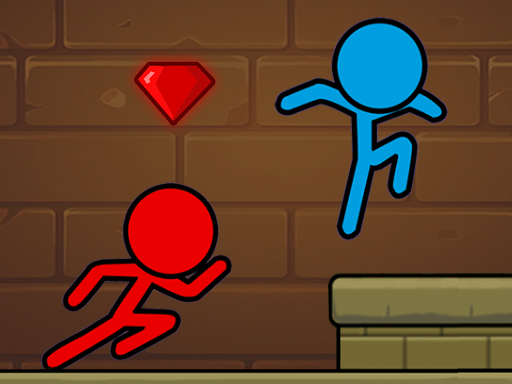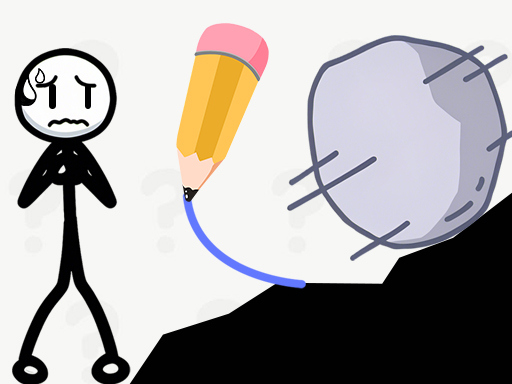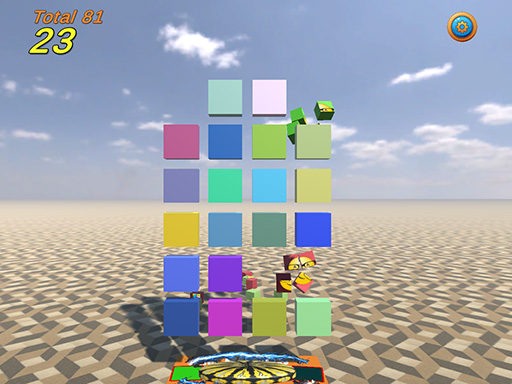Bridge Architect: Logic Puzzle Challenge
About Bridge Architect: Logic Puzzle Challenge
Oh my gosh, you guys, you absolutely *have* to hear about this game I stumbled upon recently. Seriously, I've been completely lost in it for days, and I mean *lost*. Like, "what time is it, is it still Tuesday?" kind of lost. It’s called *Bridge Architect: Logic Puzzle Challenge*, and honestly, it’s one of those rare finds that just clicks with every single part of my brain that loves a good puzzle and a dash of creative freedom.
You know how sometimes you pick up a game, and it promises to test your problem-solving skills, but then it ends up being just a series of repetitive tasks? Yeah, this isn’t that. Not even close. From the moment I first launched it, there was this immediate sense of potential, a quiet challenge waiting. The premise is deceptively simple: you’ve got a stranded car, a gap, and you need to draw a path for it to get to the other side. Sounds easy, right? That’s what I thought too, for about five minutes. Then the game just gently, almost lovingly, kicks you in the brain.
What I love about games like this is that initial spark of curiosity, that feeling of "how hard can it really be?" And then, as you progress, you realize the depth. *Bridge Architect* starts you off with these charming, almost minimalist environments. You see the little car, looking a bit helpless, and then the destination, usually just a short hop away. Your tool? A simple drawing interface. You literally just drag your finger or mouse to sketch out lines that will form your bridge. And that’s where the magic begins.
The first few levels are a breeze, lulling you into a false sense of security. You draw a straight line, the car rolls across, victory! You feel like a genius. But then, the game starts introducing variables. Suddenly, the gap is wider. Or there’s an incline. Or, gasp, there are *obstacles* in the way – maybe a giant rock, or a chasm that’s not just a simple drop but a multi-tiered nightmare. This is where the "Logic Puzzle Challenge" really earns its name. It’s not just about drawing *a* bridge; it’s about drawing the *right* bridge, the *clever* bridge, the one that defies gravity just enough to work.
There’s something incredibly satisfying about the tactile nature of drawing your solution. You’re not just placing pre-defined blocks; you’re sketching. You’re making curves, angles, supports, ramps – whatever your mind can conjure. And the physics engine, oh my god, the physics engine is brilliant. Every line you draw has weight, has structural integrity (or lack thereof). You can almost feel the tension in the virtual steel as you sketch a precarious arch, hoping it holds. You’ll find yourself meticulously planning out every segment, thinking about load distribution, pivot points, and momentum. It’s like being an actual civil engineer, but without the years of schooling and the risk of actual human casualties.
The brilliant thing about this is the trial and error. You’ll draw something that looks perfect in your head, a masterpiece of engineering. You hit the "play" button, and the little car starts its journey, trundling forward. For a split second, you hold your breath, a hopeful smile on your face. Then, *whoosh*, your magnificent structure collapses into a heap of digital debris, sending the car tumbling into the abyss. And you know what? That’s half the fun! There’s a certain kind of gleeful despair that washes over you when your perfectly designed bridge implodes. You just laugh, shake your head, and immediately dive back in, already seeing the flaws, already formulating a new, even more audacious plan.
I mean, I’ve always been drawn to games that demand both creativity and logical thinking. Think about it – the satisfaction of building something from scratch, seeing your vision come to life, but then also having that vision rigorously tested by the cold, hard laws of physics. It’s that perfect blend. You're not just solving a puzzle; you're *designing* a solution. And the game rewards truly innovative thinking. Sometimes, the most obvious path isn't the best. Sometimes, a minimalist, almost artistic design, using just a few strategically placed lines, is far more effective than a sprawling, over-engineered monstrosity. That's when you really feel like a master architect.
The environments themselves become part of the puzzle. You’re not just drawing on a flat plane. You might be navigating a treacherous canyon with jagged rocks jutting out, or a series of floating platforms that require precise ramps and landing zones. The visual spectacle isn't about hyper-realistic graphics, but about the clarity and charm of its design, making the obstacles clear and the goal unambiguous. You can almost feel the wind whipping through the canyon as your car makes a desperate leap, hoping your last-minute ramp holds.
And the moments of anticipation! Just wait until you encounter levels where you have to not only build a bridge but also account for a moving obstacle, or a car that needs to pick up speed to jump a gap. The real magic happens when you finally nail a complex solution. You’ve been staring at the screen, sketching, deleting, tweaking, for what feels like an eternity. You’ve failed spectacularly ten times over. You’ve walked away, grabbed a coffee, come back with fresh eyes. And then, it clicks. You see it. That one extra support, that slight curve, that perfectly angled ramp. You draw it in, hit play, and the car… it just *glides*. It sails over the chasm, bounces off a strategically placed spring-like structure you drew, lands perfectly, and cruises to the finish line. That feeling, that absolute rush of pure, unadulterated satisfaction, is what keeps me coming back. It’s that moment where the strategy finally clicks into place, and you feel like the smartest person on the planet.
This makes me wonder, how many ways are there to solve each puzzle? Because that’s another fascinating aspect. Often, there isn't just one "correct" answer. There are elegant solutions, brute-force solutions, and downright wacky solutions that somehow, against all odds, manage to work. This encourages experimentation, which is crucial for a game like this. You’re not just following a set path; you’re forging your own.
In my experience, the best moments come when you’re so absorbed that the world outside just fades away. With *Bridge Architect*, I’ve had entire evenings vanish. I’ll start playing, thinking I’ll just do a couple of levels, and then suddenly the sun is setting, or rising, and I’m still there, hunched over my device, utterly engrossed in trying to get this little virtual car across another impossible gap. The tension in your shoulders as you watch the car teeter on the edge of your hand-drawn bridge is palpable. The relief when it makes it is a physical release.
It’s more than just a brain game; it’s an emotional rollercoaster. There’s the initial frustration, sure, but it only makes the eventual victory sweeter. There’s the curiosity that drives exploration of different designs, the wonder at clever game design choices that continually introduce new challenges without ever feeling unfair. It connects with that universal gaming experience of overcoming adversity through ingenuity.
Honestly, if you're looking for something that will truly challenge your mind, ignite your creative spark, and provide hours of deeply satisfying gameplay, you absolutely have to check out *Bridge Architect: Logic Puzzle Challenge*. It’s not just a game; it’s an adventure in problem-solving, a journey of bridge construction where every successful path feels like a personal triumph. Seriously, grab your device, and get ready to draw some roads to rescue that stranded car. You won't regret it.
You know how sometimes you pick up a game, and it promises to test your problem-solving skills, but then it ends up being just a series of repetitive tasks? Yeah, this isn’t that. Not even close. From the moment I first launched it, there was this immediate sense of potential, a quiet challenge waiting. The premise is deceptively simple: you’ve got a stranded car, a gap, and you need to draw a path for it to get to the other side. Sounds easy, right? That’s what I thought too, for about five minutes. Then the game just gently, almost lovingly, kicks you in the brain.
What I love about games like this is that initial spark of curiosity, that feeling of "how hard can it really be?" And then, as you progress, you realize the depth. *Bridge Architect* starts you off with these charming, almost minimalist environments. You see the little car, looking a bit helpless, and then the destination, usually just a short hop away. Your tool? A simple drawing interface. You literally just drag your finger or mouse to sketch out lines that will form your bridge. And that’s where the magic begins.
The first few levels are a breeze, lulling you into a false sense of security. You draw a straight line, the car rolls across, victory! You feel like a genius. But then, the game starts introducing variables. Suddenly, the gap is wider. Or there’s an incline. Or, gasp, there are *obstacles* in the way – maybe a giant rock, or a chasm that’s not just a simple drop but a multi-tiered nightmare. This is where the "Logic Puzzle Challenge" really earns its name. It’s not just about drawing *a* bridge; it’s about drawing the *right* bridge, the *clever* bridge, the one that defies gravity just enough to work.
There’s something incredibly satisfying about the tactile nature of drawing your solution. You’re not just placing pre-defined blocks; you’re sketching. You’re making curves, angles, supports, ramps – whatever your mind can conjure. And the physics engine, oh my god, the physics engine is brilliant. Every line you draw has weight, has structural integrity (or lack thereof). You can almost feel the tension in the virtual steel as you sketch a precarious arch, hoping it holds. You’ll find yourself meticulously planning out every segment, thinking about load distribution, pivot points, and momentum. It’s like being an actual civil engineer, but without the years of schooling and the risk of actual human casualties.
The brilliant thing about this is the trial and error. You’ll draw something that looks perfect in your head, a masterpiece of engineering. You hit the "play" button, and the little car starts its journey, trundling forward. For a split second, you hold your breath, a hopeful smile on your face. Then, *whoosh*, your magnificent structure collapses into a heap of digital debris, sending the car tumbling into the abyss. And you know what? That’s half the fun! There’s a certain kind of gleeful despair that washes over you when your perfectly designed bridge implodes. You just laugh, shake your head, and immediately dive back in, already seeing the flaws, already formulating a new, even more audacious plan.
I mean, I’ve always been drawn to games that demand both creativity and logical thinking. Think about it – the satisfaction of building something from scratch, seeing your vision come to life, but then also having that vision rigorously tested by the cold, hard laws of physics. It’s that perfect blend. You're not just solving a puzzle; you're *designing* a solution. And the game rewards truly innovative thinking. Sometimes, the most obvious path isn't the best. Sometimes, a minimalist, almost artistic design, using just a few strategically placed lines, is far more effective than a sprawling, over-engineered monstrosity. That's when you really feel like a master architect.
The environments themselves become part of the puzzle. You’re not just drawing on a flat plane. You might be navigating a treacherous canyon with jagged rocks jutting out, or a series of floating platforms that require precise ramps and landing zones. The visual spectacle isn't about hyper-realistic graphics, but about the clarity and charm of its design, making the obstacles clear and the goal unambiguous. You can almost feel the wind whipping through the canyon as your car makes a desperate leap, hoping your last-minute ramp holds.
And the moments of anticipation! Just wait until you encounter levels where you have to not only build a bridge but also account for a moving obstacle, or a car that needs to pick up speed to jump a gap. The real magic happens when you finally nail a complex solution. You’ve been staring at the screen, sketching, deleting, tweaking, for what feels like an eternity. You’ve failed spectacularly ten times over. You’ve walked away, grabbed a coffee, come back with fresh eyes. And then, it clicks. You see it. That one extra support, that slight curve, that perfectly angled ramp. You draw it in, hit play, and the car… it just *glides*. It sails over the chasm, bounces off a strategically placed spring-like structure you drew, lands perfectly, and cruises to the finish line. That feeling, that absolute rush of pure, unadulterated satisfaction, is what keeps me coming back. It’s that moment where the strategy finally clicks into place, and you feel like the smartest person on the planet.
This makes me wonder, how many ways are there to solve each puzzle? Because that’s another fascinating aspect. Often, there isn't just one "correct" answer. There are elegant solutions, brute-force solutions, and downright wacky solutions that somehow, against all odds, manage to work. This encourages experimentation, which is crucial for a game like this. You’re not just following a set path; you’re forging your own.
In my experience, the best moments come when you’re so absorbed that the world outside just fades away. With *Bridge Architect*, I’ve had entire evenings vanish. I’ll start playing, thinking I’ll just do a couple of levels, and then suddenly the sun is setting, or rising, and I’m still there, hunched over my device, utterly engrossed in trying to get this little virtual car across another impossible gap. The tension in your shoulders as you watch the car teeter on the edge of your hand-drawn bridge is palpable. The relief when it makes it is a physical release.
It’s more than just a brain game; it’s an emotional rollercoaster. There’s the initial frustration, sure, but it only makes the eventual victory sweeter. There’s the curiosity that drives exploration of different designs, the wonder at clever game design choices that continually introduce new challenges without ever feeling unfair. It connects with that universal gaming experience of overcoming adversity through ingenuity.
Honestly, if you're looking for something that will truly challenge your mind, ignite your creative spark, and provide hours of deeply satisfying gameplay, you absolutely have to check out *Bridge Architect: Logic Puzzle Challenge*. It’s not just a game; it’s an adventure in problem-solving, a journey of bridge construction where every successful path feels like a personal triumph. Seriously, grab your device, and get ready to draw some roads to rescue that stranded car. You won't regret it.
Enjoy playing Bridge Architect: Logic Puzzle Challenge online for free on Midiablog games. This Puzzle game offers amazing gameplay and stunning graphics. No downloads required, play directly in your browser!
How to Play
- Touch the screen to start drawing - Hold and drag across to make the shapes you want - Once you finish release your finger and the car will run





Comments
This game is awesome! I love the graphics and gameplay.
One of the best games I've played recently. Highly recommended!